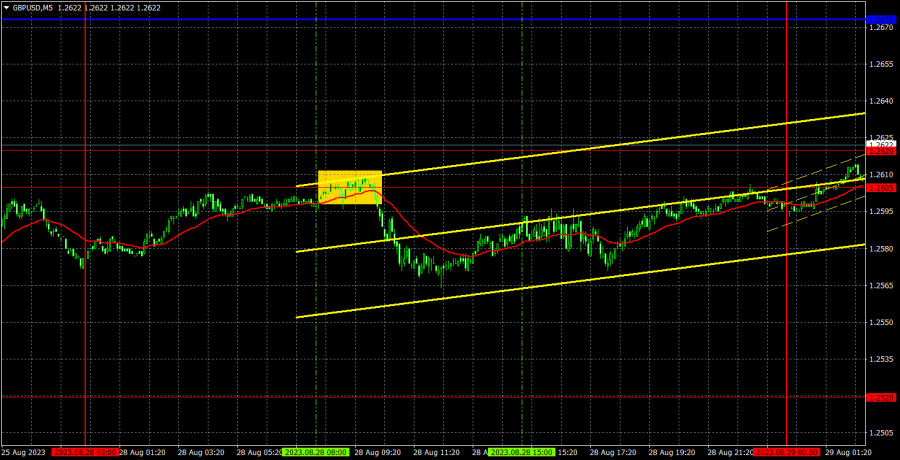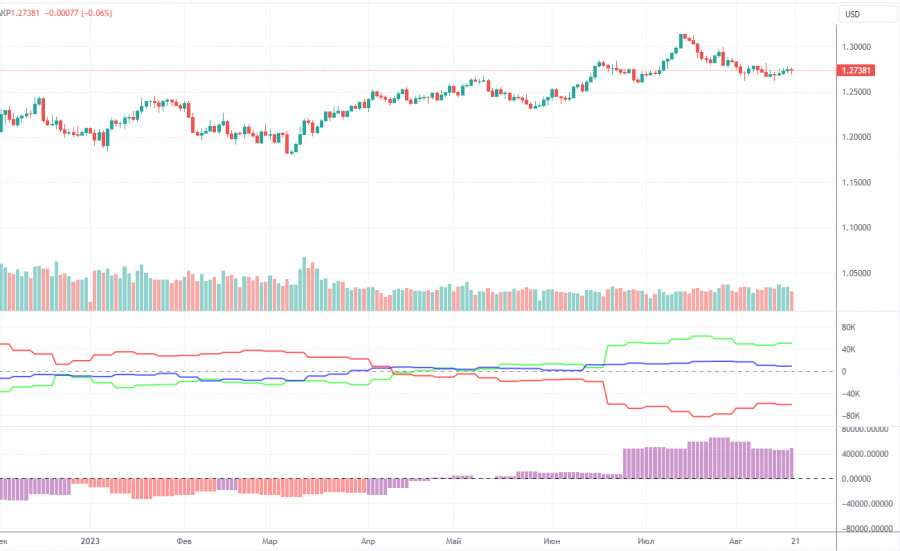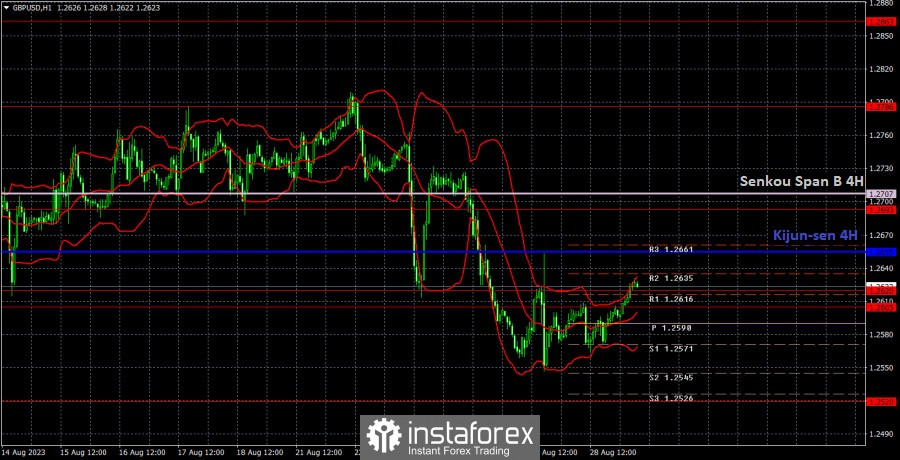Analysis of GBP/USD 5M
GBP/USD traded higher on Monday. In fact, it only rose by about 20 pips, and the day's movements resembled a flatline, but at least the pound was moving, unlike the euro. Volatility was about 44 pips - also an absolute trifle. It was pointless to trade under such conditions, but at least the pound's signals were still more interesting than those for the euro. Only one signal. There were no macroeconomic or fundamental events lined up in either the US or the UK, so there was nothing to react to.
The only trading signal was a bounce from the 1.2605 level at the very beginning of the European session. Afterwards, the price fell by about 25 pips, but, obviously, it couldn't reach the 1.2520 target. The price gradually rose for the rest of the day, and the trade could have been manually closed at a small profit. There couldn't have been any loss because after moving in the correct direction by 20 pips, traders could still set a break-even Stop Loss. In general, the pound is hoping to enter a corrective phase, but this will depend on the macroeconomic background.
COT report:
According to the latest report, the non-commercial group of traders opened 7,500 long positions and closed 600 short ones. Thus, the net position of non-commercial traders increased by 8,100 positions in a week. The net position has been steadily growing over the past 11 months as well as the pound sterling. Now, the net position has advanced markedly. This is why the pair will hardly maintain its bullish momentum. I believe that a long and protracted downward movement should begin. COT reports signal a slight growth of the British currency but it will not be able to rise in the long term. There are no drivers for opening new long positions. Slowly, sell signals are emerging on the 4-hour and 24-hour charts.
The British currency has already grown by a total of 2,800 pips, from its absolute lows reached last year, which is a significant increase. Without a downward correction, the continuation of the uptrend will be illogical. We are not against the uptrend; we just believe a solid correction is needed first. The market perceives the fundamental background one-sidedly, ignoring any data in favor of the dollar. The Non-commercial group of traders has a total of 98,000 long positions and 38,900 short ones. I remain skeptical about the long-term growth of the pound sterling, and the market has recently begun to pay attention to short positions.
Analysis of GBP/USD 1H
On the 1H chart, the pound/dollar pair has left the sideways channel where it has been for three weeks. The pair can fall further, which is what we're expecting. Currently, the macroeconomic and fundamental background is not that crucial for the mid-term movement, as the market has long since processed all the bullish factors for the pound. However, this week presents several influential reports, so the pound can still rise. But for now, the price is below the Senkou Span B and Kijun-sen lines, so it's too early to speak about a trend reversal.
On August 29, traders should pay attention to the following key levels: 1.2429-1.2445, 1.2520, 1.2605-1.2620, 1.2693, 1.2786, 1.2863, 1.2981-1.2987. The Senkou Span B (1.2707) and Kijun-sen (1.2655) lines can also be sources of signals, e.g. rebounds and breakout of these levels and lines. It is recommended to set the Stop Loss orders at the breakeven level when the price moves in the right direction by 20 pips. The lines of the Ichimoku indicator can move during the day, which should be taken into account when determining trading signals. There are support and resistance levels that can be used to lock in profits.
On Tuesday, both the UK and the US will release similar reports. It pertains to the JOLTs job openings report. It can influence the pair's movement, but only if the actual figure differs from forecasts. The larger the discrepancy, the stronger the reaction might be.
Description of the chart:
Support and resistance levels are thick red lines near which the trend may end. They do not provide trading signals;
The Kijun-sen and Senkou Span B lines are the lines of the Ichimoku indicator, plotted to the 1H timeframe from the 4H one. They provide trading signals;
Extreme levels are thin red lines from which the price bounced earlier. They provide trading signals;
Yellow lines are trend lines, trend channels, and any other technical patterns;
Indicator 1 on the COT charts is the net position size for each category of traders;
Indicator 2 on the COT charts is the net position size for the Non-commercial group.












